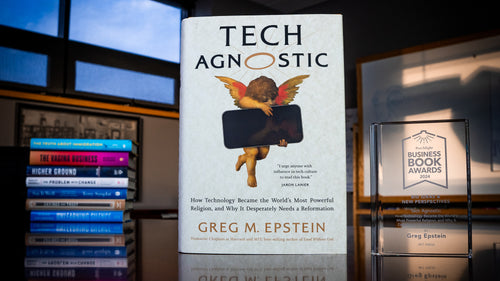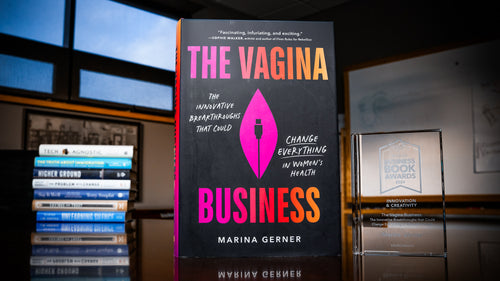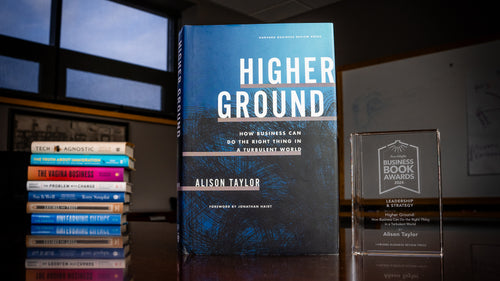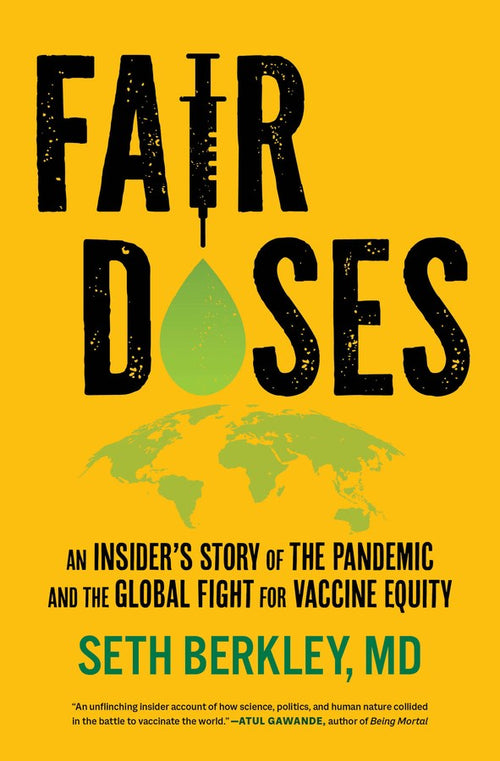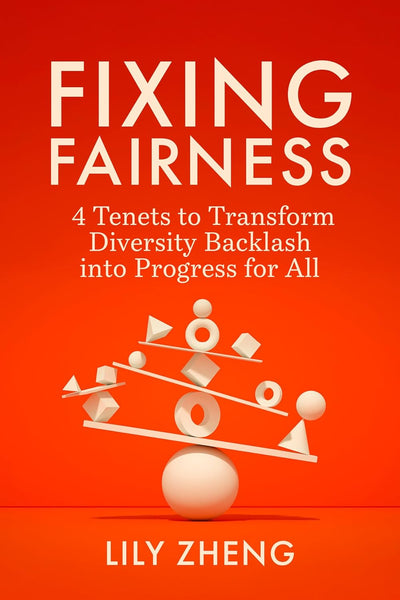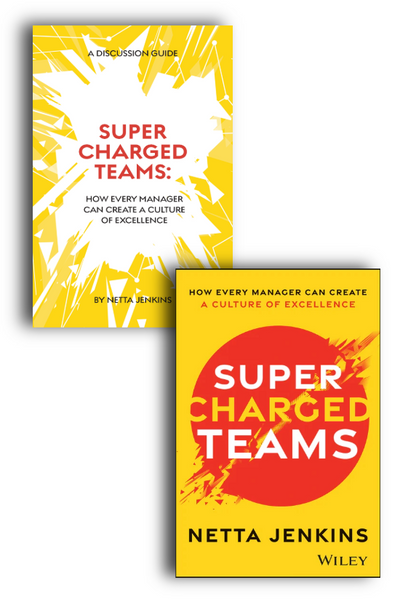An Excerpt from Dragon on Centre Street
In this excerpt from Dragon on Centre Street, New York Times reporter Jonah E. Bromwich recounts how he and his team covered the unfolding story of the unprecedented indictment of a former U.S. president.
 In spring 2024, former President Donald Trump, accompanied by loyal supporters, faced a high-stakes trial in a Manhattan courtroom. New York Times journalist Jonah Bromwich captured every moment—from the streets to the courtroom to behind-the-scenes maneuvers—and his reports captivated a global audience. Now, with added insights to share, Bromwich presents the definitive account of this stranger-than-fiction showdown on Centre Street.
In spring 2024, former President Donald Trump, accompanied by loyal supporters, faced a high-stakes trial in a Manhattan courtroom. New York Times journalist Jonah Bromwich captured every moment—from the streets to the courtroom to behind-the-scenes maneuvers—and his reports captivated a global audience. Now, with added insights to share, Bromwich presents the definitive account of this stranger-than-fiction showdown on Centre Street.
In the following excerpt from Dragon on Centre Street: New York vs. Donald J. Trump, Bromwich describes how he and his team of reporters searched for clues about an unprecedented event unfolding behind closed doors: the possibility that prosecutors were persuading a grand jury to indict a former president of the United States.
◊◊◊◊◊
INDICTMENT
Manhattan’s criminal justice system operates from a series of hulking buildings clustered along Centre Street, a downtown strip squeezed between Tribeca and Chinatown. Courthouses dot the street, and the US attorney, the police commissioner, and the Manhattan DA all work nearby, attended by infantries of cops, court officers, and other uniformed creatures of the law. Occasionally, tourists will stop to take a picture of the regal Roman facade of 60 Centre Street, famous from its cameos in Law & Order. But more often, unless some excitement arises—a sudden outburst of chaos, a notorious defendant mugging for news cameras—outsiders are pulled toward the most recognizable nearby landmark, the Brooklyn Bridge, leaving the neighborhood natives, uniformed and not, to their daily routines.
No excitement was apparent on a cold Thursday morning in March 2023 as two New York Times stringers descended on Centre Street for a stakeout. But they believed something extraordinary was taking place within one of the anonymous buildings: Prosecutors working for the district attorney, Alvin L. Bragg, were on the verge of persuading a grand jury to indict an American president. By law, grand jury presentations are secret and, in the normal course of events, reporter-proof. To confirm their suspicions, the stringers, Nate Schweber and Sean Piccoli, would have to spot a pattern meant to be invisible in the neighborhood’s post-pandemic bustle.
They keyed in on Hogan Place, the narrow one-way corridor that ran between two of the block-long court buildings on Centre Street. On the north side of Hogan, court officers stood idly under scaffolding that shadowed the entrance to the DA’s office, embedded within the borough’s main criminal courthouse on 100 Centre Street. Across Hogan was 80 Centre, the building reserved for special grand juries, dedicated to specific, long-term investigations. Special grand jurors show up several days a week, like students in a college seminar, watching prosecutors question witnesses. When prosecutors are satisfied, they explain the charges, then leave the grand jurors to vote on whether to indict. Usually, they do.
Nate and Sean were aware that the grand jury in which they were interested met on Mondays, Wednesdays, and Thursdays. But the jurors themselves would be difficult to identify, and there were few clues as to when prosecutors would ask them to vote. Nate, lanky and long-haired with a zen demeanor, told us shortly after noon that he’d spotted a “wonderful red-tailed hawk” flying over a park behind the DA’s office. “Nothing else of note . . . yet,” he said.
The stringers knew that whatever it was they were going to see, they needed to see it first. In 2018, a Times investigative reporter named Willy Rashbaum had broken the story that the district attorney’s office was scrutinizing the president’s company. In the five years that followed, Rashbaum and his colleagues broke every major story about the office’s investigation. By 2023, Willy was working closely with two other Times staffers—Ben Protess, a driven investigative reporter in his late thirties, and me, a relative newcomer to the courts beat. Earlier in March, we broke the news that Bragg was on the verge of bringing an indictment. We expected the president to be charged with a criminal cover-up: falsifying documents to disguise a hush-money payment to a porn star.
Our competitors—reporters from CNN, CBS, NBC—were sniffing around the DA headquarters at Hogan Place, too. The Times stringers were under heavy pressure to keep our streak going. Each of them had a digital dossier listing dozens of people whom Willy, Ben, and I associated with the case. The dossier included numerous witnesses whose names were fused in the public imagination with that of the president. There was diminutive, mustachioed David Pecker, the former publisher of the National Enquirer, whose alliance with the president peaked during his first White House run; Hope Hicks, the teen-model-turned-twenty-something White House spokeswoman who channeled her boss’s words to the public; and Michael Cohen, a disbarred lawyer with a seemingly permanent hangdog expression who in 2016 had paid off the porn star Stormy Daniels just weeks before his idol, the man after whom he’d modeled his entire persona, won the presidential election.
All three witnesses had come and gone. Nate, Sean, and a third stringer, Kate Christobek, clocked them when they made their way into 80 Centre to testify before the grand jury. Just the day before, the DA’s office had conducted a virtual meeting with Stormy Daniels. So on that Thursday morning, March 16, we suspected there was little left for the prosecutors to do other than indict.
Kate was our chief advantage. She had been a Manhattan prosecutor until her interest in broadcast news became impossible to ignore, and she’d left the halls of justice for the back alley of journalism. She knew the courthouse personnel and the rhythms of Centre Street. She advised us that when the grand jurors were on the verge of a vote, one of the prosecutors might carry a copy of the penal law, a phonebook-sized tome used to guide the jury through the charges. “Size of a Bible,” Kate explained. “Typically bright blue.”
Thanks to Kate, the stringers had eyes on a key player our competitors didn’t seem to be tracking: the grand jury warden overseeing the testimony. When the indictment was filed, he would likely be the one to file it. We didn’t know his name, but we had a blurry picture of him masked and carrying a tote bag from Target. So we dubbed him “Target Bag Guy”—TBG for short.
In the early afternoon, Sean spotted him under the scaffolding on the north side of Hogan and sent a series of iPhone pictures to the team. They showed a solidly built man with close-cropped brown hair walking toward Collect Pond Park, the green space across from the criminal courthouse that functioned as a makeshift halfway home for a handful of struggling people the pandemic had driven onto the streets.
Willy and I were at the Times’s Midtown headquarters when the pictures of TBG showed up in our text group. Willy peered closely at his phone, investigating.
“Who’s this guy?” he asked after a few moments.
“Willy! It’s TBG!” Ben said from his house in New Jersey. “You may not recognize him without his mask and Target bag, but that’s him for sure.”
We had our man, a walking indication that the grand jury was active. TBG was the Where’s Waldo? of our daily drama. If we could keep an eye on him, we might just be able to confirm when the indictment was filed.
Soon after that, the stringers spotted a trio of high-ranking prosecutors as they emerged from the DA’s office and crossed Hogan. There was Susan Hoffinger, the office’s new head of investigations, with her short, curly hair and perennially grim expression; Chris Conroy, the thin DA veteran who’d been working the case longer than anyone; and calm, unassuming Matthew Colangelo, who’d joined the team just a few months earlier.
Once we saw the prosecutors march into 80 Centre, Ben made sure the whole team was in position. Kate may have been our secret weapon, and Willy a one-man scoop machine, but Ben was our leader—writing, reporting, and organizing six unruly reporters into a single coherent unit. He assigned Nate to the clerk’s office in 100 Centre. Along with the district attorney’s executive offices, the art deco courthouse housed the borough’s criminal courtrooms, many lesser grand juries, and the clerk’s office, where all official criminal paperwork was sent. With any luck, Nate would be able to clock the indictment as it was filed.
The other reporters hanging around Hogan Place noticed our stringers were onto something.
“There’s definitely a lot of ‘What is the Times doing?’” Sean said. “I’m being unhelpful but friendly with everyone.”
“Unhelpful but friendly also describes the clerks,” Nate said, messaging from the tenth floor. The clerk’s office was alternately buzzing and slow, he said, “but no sign of The Thing.” He asked one of the clerks if a certain high-profile indictment would get special treatment.
“Nothing gets special treatment,” she said. “That’s how things work best.”
The office closed for the day at 5 p.m., as it always did. Friday was quieter; no grand jury that day.
But over the weekend, Donald J. Trump got directly involved. He gave us a small taste of how it would feel when his command of the American gaze intruded on the justice-blind institutions of Centre Street.
⬩ ⬩ ⬩
Trump was holed up in Florida, a plane ride from the center of a universe that had once revolved around him. But he retained his talent for making news on his own terms, sending reporters scrambling no matter the time. Just before 7:30 a.m. on Saturday, March 18, he made an all-caps announcement on his personal social media platform: “THE FAR & AWAY LEADING REPUBLICAN CANDIDATE AND FORMER PRESIDENT OF THE UNITED STATES OF AMERICA, WILL BE ARRESTED ON TUESDAY OF NEXT WEEK. PROTEST, TAKE OUR NATION BACK!”
He had no idea what he was talking about. The date appeared, in retrospect, to have been his best guess. It didn’t matter. He was impossible to ignore. The call for protest was a none-too-subtle echo of the exhortations that, two years earlier, brought a mob to the US Capitol. The attention returned, on Trump’s terms.
His prediction summoned a new energy to Centre Street. An ecosystem of partisan sentiment and free-floating intrigue attached itself to every investigation into the former president, and Trump’s post alerted the world to the secretive proceedings downtown. No longer did our stringers have the freedom to surveil Hogan Place without distraction. When they returned to the court buildings two days later, on a beautiful sunny Monday, they found the territory transformed by that chaotic energy, rising like vapor from the downtown sidewalks.
Our private, professional endeavor was now a public spectacle. Newscasters deployed their cameras and anchors in a line outside Collect Pond Park, across the street from the main criminal courthouse. The scaffolding outside the grand jury building at 80 Centre shaded a horde of reporters and photographers piled atop one another, jabbering, fighting, and carrying on. They were accompanied by a collection of sign-carrying pro-Trump protesters. Some of the signs lobbed insults at the district attorney: “Alvin Bragg,” one said. “Releasing the violent, prosecuting political enemies.”
“There’s just more of everything,” Nate reported. “Officers. Cars. French barriers like it’s New Year’s Eve in Times Square.”
The surge of competition rattled us. Previously, the reporters had been spread out. Now they were densely packed and rumormongering. One rumor quickly hardened into conventional wisdom: If Trump was to be arrested Tuesday, he would have to be indicted Monday.
“This is so gossipy now,” Kate said. “Like a bad game of telephone.”
Word was that a former federal prosecutor named Robert Costello—a nemesis of Michael Cohen—was already in the building seeking to convince the grand jury not to indict Trump on Cohen’s word. Trump’s lawyers requested that the grand jurors hear Costello out; apparently, the jurors had agreed. We learned later that Costello sought to persuade the jurors that prosecutors were hiding information from them and insisted that Cohen wouldn’t tell the truth, even with a gun to his head.
Sean entered 80 Centre to try to spot Costello, following the lead of the other reporters gathered there, while Kate posted up at the back of the building, doing the same. Neither was watching for TBG.
Out in New Jersey, Ben got annoyed. The indictment could be coming at any moment. We couldn’t let a witness distract us.
“The focus is on TBG,” he said. “Please plan as if indictment is happening today. TBG is priority.”
Kate bristled. “I think it would be helpful for Sean and me to get some instruction on how to play the next few hours.”
“Just watch for TBG,” Ben said.
At 4:55 p.m., Kate spotted our Waldo, keys jangling on his belt, a manila folder under his arm. He was trailed by the prosecutor trio: Hoffinger, Conroy, and Colangelo. Willy asked Kate to follow them. But they entered the DA’s office on 1 Hogan Place through a private door.
Nate reported from the tenth floor of 100 Centre that the clerk’s office was officially closed for the day. No indictment. But we thought the prosecutors might appear after hours, taking advantage of the privacy to file. We asked him to stay and keep watch.
There was no sign of them. The office remained dark. Shortly after 5 p.m., two court officers swept in, confirmed the room was empty, and politely ushered Nate out. One told Nate that nothing was ever filed after business hours. We believed him. It was typical for 100 Centre to hew to routine, and for many, that meant a prompt end to the workday.
Trump hadn’t been indicted that day. He wasn’t going to be arrested the next day. We began to wonder if the district attorney was getting cold feet.
“Should I have tackled TBG to see what these papers are?” Kate asked.
“Wait, you didn’t?” Willy asked. He promised to get her a tackling dummy so she could practice.
⬩ ⬩ ⬩
By the time we were on indictment watch in March 2023, Alvin L. Bragg, the first Black Manhattan district attorney, had been responsible for prosecuting crime in the borough for fifteen months. A big, friendly man who affected an impassive look in public, Bragg had an easy smile in private. Most people who met him liked him. But he struggled with the press.
Bragg seemed uncomfortable whenever there was a microphone or a camera pointed his way. Allergic to sound bites, he spoke instead in a measured lawyer-ese, frequently interrupting himself as if trying to edit sentences he was already in the midst of speaking. Early in his tenure, the New York Post installed photographers outside 1 Hogan Place, the DA’s side entrance to 100 Centre Street. Their readership was rewarded with frequent pictures of Bragg slouching into work, weighed down by a messenger bag like some second-year associate.
The images distracted from Bragg’s polished résumé. He attended Harvard and Harvard Law School. He clerked at the Southern District for Judge Robert P. Patterson Jr., the son of President Truman’s war secretary. Later, Bragg became an assistant US attorney in the Southern District. A trove of talented trial lawyers, Southern has long been the most prestigious prosecutor’s office in the country, led by a succession of famous men, including Robert Morgenthau, Rudy Giuliani, and James Comey.
But Bragg didn’t stay at Southern or climb to the next rung of achievement. Instead, he decamped to work at the New York attorney general’s office, where he led a unit that investigated the police killings of unarmed people, many of whom were Black. Most prosecutors considered Southern an elite posting; the state attorney general’s office, a downgrade. For Bragg, it was a broadening of horizons. It was also an early sign that he didn’t make a religion of the hierarchies that had surrounded him for much of his professional life. His reluctance to think top-down was clear when he ran for DA in 2021. He routinely kept Important People waiting because he was absorbed in conversation with a stranger he hadn’t known an hour earlier.
The DA campaign was one of my first assignments as a Manhattan courts reporter for the Times’s Metro desk. Previously, I’d been on the Styles desk, where I often wrote trend stories about the way social media was changing our daily lives. The only Trump-related news I covered for Styles was a November 2020 press conference during which Rudy Giuliani insisted his boss had won the presidential election until his sweat began to drip in color and black streaks streamed down his cheeks.
I found Bragg’s vision during the 2021 DA campaign straightforward and easy to understand: Treat powerless people who committed petty crimes mercifully, and hold powerful people who committed serious crimes accountable. He won a hard-fought Democratic primary in June 2021, and after dominating the general election in November, he was sworn in at midnight on New Year’s Day.
Bragg’s early tenure was a disaster. His nemeses at the New York Post proclaimed that his policies were a plot to aid criminals and destroy New York City. The traditional news media, when it considered Bragg at all, did so because of the Trump investigation he had inherited from his predecessor. Bragg’s other intentions for the office were often engulfed by the attention vortex that shared the former president’s name. When, two months after he was sworn in, it became public knowledge that Bragg had halted a potential indictment of Trump, pundits and talk show hosts turned on him. He became a laughingstock and, soon enough, an afterthought. But if Bragg suffered under the bright lights, he benefited when attention was elsewhere. And he was insistent on taking the time he needed. Though his Trump investigation was thought dead, Bragg and his team kept working. The press was in the dark until November 2022, when Willy, Ben, and I broke the news of a rejuvenated criminal inquiry into Trump.
Excerpted from DRAGON ON CENTRE STREET: New York vs Donald Trump by Jonah Bromwich. Copyright © 2025 by Jonah Bromwich. Published in the United States by Authors Equity, LLC. Excerpted with permission. All rights reserved.
About the author
Jonah E. Bromwich, a reporter for The New York Times, has covered Manhattan’s criminal justice system for years. He was a lead reporter on Trump’s criminal trial, reporting live from the courtroom for more than a month.
Jonah has covered a number of major legal stories for the Metro desk, including multiple trials involving President Trump, the downfall of Governor Andrew Cuomo, and the chaos on Rikers Island. Previously, Jonah worked for the Style section, reporting on cultural change brought about by social media and celebrity culture. A native of Washington, DC, he studied at the University of Wisconsin, Madison, and joined The Times in 2012.

